| Columns Retired Columns & Blogs |
Meridian D600 digital active loudspeaker Measurements
Sidebar 3: Measurement
Footnote 1: See October, p.166–167, for a full description of how this test is performed and why I think it useful.
Looking first at the D600's response on the tweeter axis to a 25µs rectangular pulse (fig.1, plotted over a 5ms window), this can be seen to be overlaid with a high degree of ultrasonic ringing, due to the metal-dome tweeter's primary "oil-can" resonance being excited by the wide-bandwidth test signal. Of very high Q or "quality factor," this resonance is still ringing more than 2ms after the stimulus has been and gone, but whether it will produce audible effects downband on music signal is open to question. Certainly with CD replay, the band-limited nature of the analog signal will prevent this resonance's excitation unless the player itself produces a significant level of spuriae at exactly the same frequency.
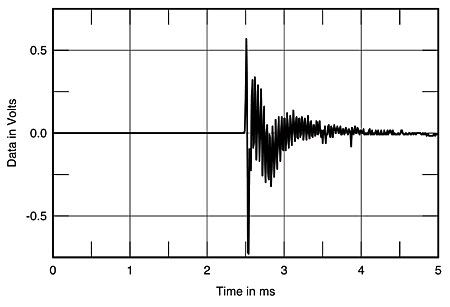
Fig.1 Meridian D600, impulse response on tweeter axis at 36" (5ms time window, 30kHz bandwidth).
The step response (fig.2) reveals the non–time-coherent nature of the speaker's crossover and construction, which results in the lazy manner in which the lower-frequency content of the impulse decays. The tweeter appears to be connected in positive acoustic polarity, the lower-frequency units in negative, but the steps of each smmothly hand over to one another, indicating good frequency-domain of the drive-unit outputs.
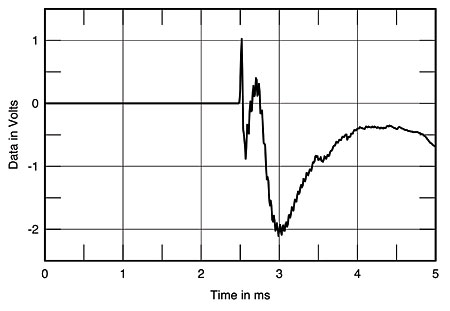
Fig.2 Meridian D600, step response on tweeter axis at 36" (5ms time window, 30kHz bandwidth).
Performing a Fast Fourier Transform calculation on the impulse response data gives the effective anechoic frequency response of the speaker on the same axis. To get an idea of the speaker's forward response characteristic and to eliminate the spurious effects of specific cancellations and reinforcements which will be peculiar to any one microphone position, I calculate five such FFT responses from impulse responses taken over a ±15° horizontal window and take the average as being typical of the balance of the direct sound to reach the listener's ear on this particular axis.
This response for the D600, taken with all the tone controls set to "flat" and plotted with 200Hz resolution from 400Hz to 30kHz, can be seen in fig.3. The response is reasonably smooth, and an overall slight downward trend is overlaid with a degree of boost in the presence region and at 10kHz, with slight suckouts between 4kHz and 6kHz and at 24kHz. (Both suckouts are less evident with the mic exactly on the tweeter axis.) The B&K measuring microphone starts to roll off above 20kHz; nevertheless, a peak 10dB above the midband level can be seen at the tweeter resonance, around 26kHz.
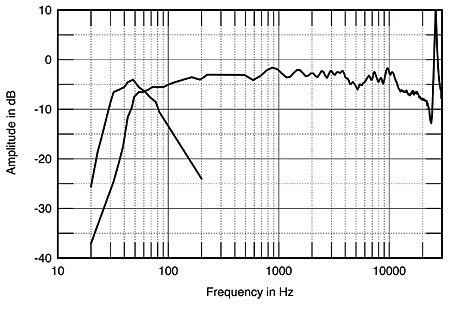
Fig.3 Meridian D600, anechoic response on tweeter axis, averaged across 30° horizontal window and corrected for microphone response, with the nearfield woofer and responses plotted below 200Hz.
Fig.3 also shows the nearfield response of the lower of the two woofers and of the rear-firing reflex port. The woofer peaks slightly at 50Hz, then rolls out rapidly, being 6dB down at 45Hz with the port handling the bulk of the output between 30Hz and 50Hz. The port itself appears to be –6dB at 28Hz.
Matching the absolute levels of these different curves for display purposes can only be approximate. I suspect that I have plotted the port output a little too high in level in fig.3, as the spatially averaged in-room response (fig.4, footnote 1) shows a rather earlier rolloff in the bass, a slight peaking up at 40Hz being followed by a steep rolloff. The curve produced by this measurement, which has proved to correlate quite well with a speaker's subjective balance, shows an overall downward tilt to the D600's in-room sound, relieved by some emphasis in the midrange, centered on the 800Hz 1/3-octave band (which might correlate with the "hardness" noted), and in the upper bass at 160Hz. (The depression above that region will be partly due to cancellation between the speaker's direct sound and the first reflection of that sound from the floor between the speaker and the measuring microphone.)
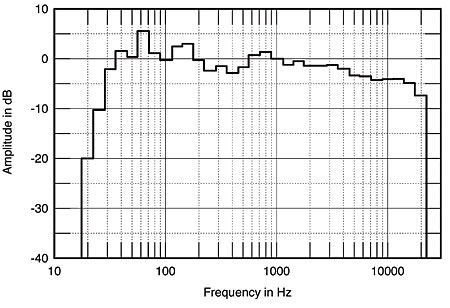
Fig.4 Meridian D600, 1/3-octave spatially averaged response in JA's listening room.
Looking at the individual curves taken to derive fig.4 suggests good pair-matching, as well as reasonably wide dispersion in both horizontal and vertical planes. The D600 is certainly not a "hot-seat" loudspeaker.
Fig.5 is the cumulative spectral-decay or waterfall plot calculated from the impulse response in fig.1. It is fairly clean in the upper midrange and treble, though some early reflections give rise to some small ripples. As expected, it is dominated by the tweeter's primary dome resonance at 26.4kHz. This has a very high amplitude, but will not be excited when the D600 is driven by digital sources that are bandwidth-limited to the audio band, of course.
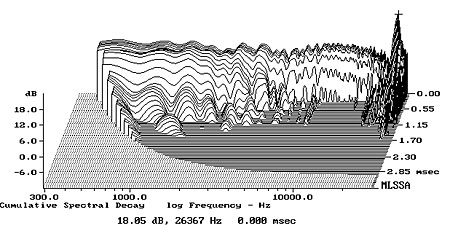
Fig.5 Meridian D600, cumulative spectral-decay plot at 36" (0.15ms risetime).
Measuring the performance of the digital replay section of the D600 with any degree of confidence presented problems. However, as it uses a conventional premium Philips 16-bit chip set, I expect that its overall departure from linearity will be typical of the genre. (See Robert Harley's measurements on the Arcam Black Box 2 and Musical Fidelity Digilog in the October issue.) Certainly I was not bothered by any noise problems (except that just as I write this conclusion, Murphy strikes. The "Master" speaker has started to emit a low-pitched burp every two minutes or so when turned on but not playing music).—John Atkinson
Footnote 1: See October, p.166–167, for a full description of how this test is performed and why I think it useful.
- Log in or register to post comments




































